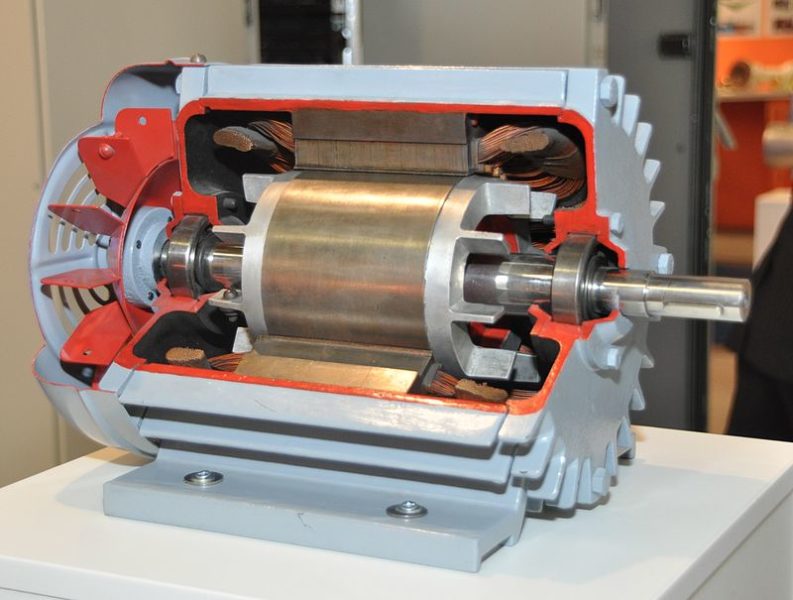In this article, we will go over five points on how to keep your electric motors running properly and help extend the life expectancy of your motors. We will go over lubrication, bearing inspection, checking your rotor and stator, motor mount, and how important keeping records are. Follow these and you should see sustained performance and reliability with your motors.
Lubrication
In this section, we will walk you through making sure the bearings on your electric motor are properly lubricated. Without proper lubrication, it will cause the bearings to wear out prematurely. Here are a few pointers on how to lubricate your electric motor’s bearings.
1. Don’t over lubricate your bearings. Over lubrication can cause the grease or oil to get into the windings. This will cause the insulation to deteriorate around the winding causing arcing and shorting inside the motor to the case. This will cause excessive heat and wear on the rotor and stator as well.
2. Always use the lubricant designated by the manufacturer. The use of other lubricants can do damage to the bearings, causing them to wear faster or unevenly.
3. Consult your manual or the manufacturer’s website to find out the proper interval for lubrication. Lubricating too often or not lubricating often enough could also cause premature wear in your bearings if under lubricated or degradation of the insulation around the winding if over lubricated.
Bearing Failures
Bearing failures are one of the most common and easiest problems to prevent. If your bearings fail, there are multiple things that could go wrong with your electric motor. This section will go over how to inspect the bearings on your motor and prevent unnecessary wear to the bearings.
1. Make sure your load attached to your motor is aligned properly. Misaligned loads can throw the rotation off-balance, straining one or both bearings.
2. Keep the motor clean of contaminants and moisture. You may have to blow out the motor every so often to keep it free of moisture and small particles that could work their way into the bearings.
3. Take temperature readings occasionally to monitor how warm or hot the bearings get. Compare those readings to the safe temperature range provided by the manufacturer. If the bearings are getting too hot, stop using the motor, let it cool down, and promptly inspect the bearings for damage or contaminants.
4. If you hear any abnormal sounds coming from your motor, you can use a stethoscope to better identify what part of the motor the sound is coming from. It is also preventative maintenance to just periodically use the stethoscope to listen for any abnormal sounds coming from the motor so you can address the issue before it does any further damage to the other components of the motor.
5. Check oil rings (if applicable) and keep an eye out for excessive shaft play. Excessive play in the shaft is a good indicator that you have a bearing that is defective or will be soon.
Rotor and Stator
The rotor and stator are the heart of your electric motor. Without these components working properly, your motor will function very poorly or not at all. These are a few pointers to help you make sure all is well with the rotor and stator.
1. Use a feeler gauge to check the gap between the stator and rotor for equal clearance all the way around.
2. Record the gap sizes at the top, bottom, and both sides at each end.
3. Compare to any previous readings you may have or to manufacturer’s gap specifications.
4. Any differences are a good indication that there is excess wear in your bearings and it may be time to replace those bearings.
Motor Mount
It is wise to inspect your motor mount on occasion to make sure it is still in good condition. A faulty motor mount can do damage internally to your motor and may even have an adverse effect on your load as well.
1. Check the mounting bolts for proper tightness. If they are loose, tighten them up until there isn’t any play in the mounts.
2. Make sure there isn’t any play between the mounts, whether it is between the plate and rubber isolation feet or between the plate and hard mount.
3. Inspect the motor plate for any warping or cracks that could cause unnecessary flexing under load or at startup.
4. If it is mounted to concrete, check the concrete for cracking or chipping/erosion around the anchor bolts.
5. Repair anything on an as found basis to extend the life of the motor.
Record Everything
It is essential that records be kept for your machines. It makes maintaining your machines that much easier and minimizes downtime.
1. Document everything! That way you know exactly what is going on with your motors.
2. If there are any symptoms that repeat, it will be easier to solve the problem the next time it occurs.
3. Keeping records will also help figure out the common problems so you can have backup parts if needed.



